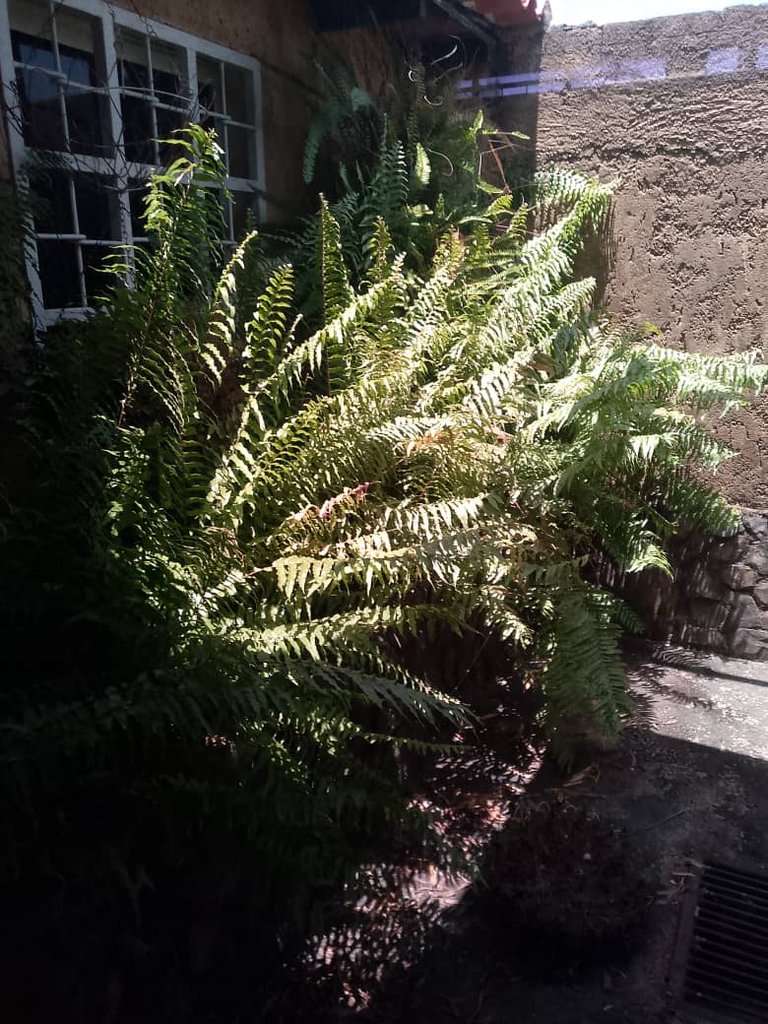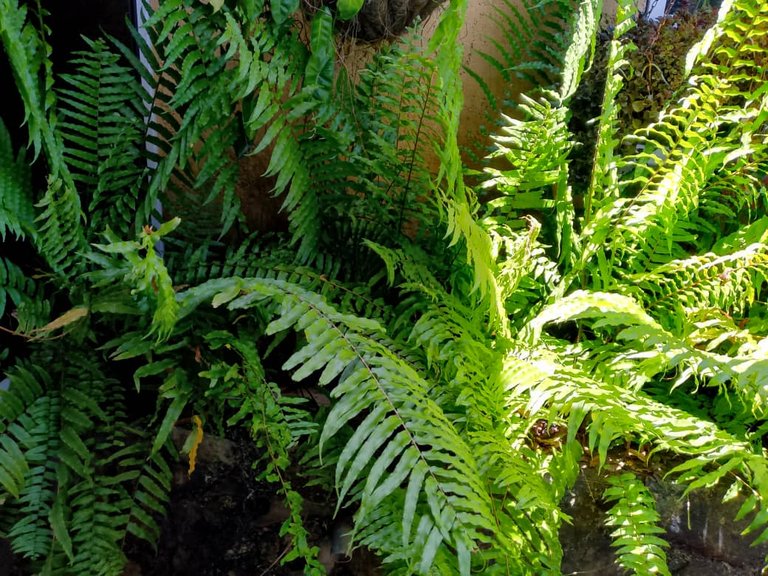Ferns: Are they planted in baskets or soil?/Los Helechos: ¿Se plantan en cestas o en suelo?


A few years ago one fine day we decided to modify the planters (my wife really decided) that are located at the back of my home. Applying the wise premise that every so often you have to change things, move the energies, and also taking advantage of the fact that the originally planted calla lilies had not prospered as we expected. To clear a planter is the easiest thing to do. Some work, taking out the old plants, throwing away the coconut shells, fighting some black ants that sting very hard. The hard part is when we look for the plants that are going to occupy the place of honor in our yard. In the middle of this great debate, over there an old basket with more than 15 years of existence barely supported a lush and beautiful fern. The enchantment was given as a cupid's crush of the plants, so without thinking much we planted the fern in the planter.
For a long time every family member or friend who visited us was taken to the patio to admire our new garden. Most of them, with lightning speed, were quick to say, “Ferns don't grow in ferns:
- Ferns are not planted in the ground.
- These ferns are shade ferns, the sun will dry them out.
- You will have to look for other bushes, that fern will not bear children, they need a basket to be able to believe.
I confess that in agriculture, as in gardening, there are many bad and erroneous beliefs about how a bush should and should not be planted. If you sit on the ground at the time of planting that bush does not grow hahaha. Anyway today when our planter is beautifully lush and we have also planted a second planter I can assure you that no matter where you sow your fern, in a basket, in a pot, or in the ground as long as you give it all the care and attention necessary that plant will grow and adorn your yard with the greenery of its beautiful leaves.
Translated with DeepL.com (free version)
Hace unos cuantos años atrás un buen día decidimos modificar las jardineras (Realmente decidió mi esposa) que están situadas en la parte posterior de mi hogar. Aplicando la sabia premisa que cada cierto tiempo hay que modificar las cosas, mover las energías, y además aprovechando que las calas sembradas originalmente no habían prosperados como esperábamos. Desocupar una jardinera es lo más fácil. Algo de trabajo, sacar las viejas plantas, botar las conchas de cocos, combatir a unas hormigas negras que pican durísimo. La parte difícil es cuando se busca las plantas que van a ocupar el sitial de honor en nuestro patio. En medio de ese gran debate, por allá una vieja cesta con más de 15 años de existencia a duras penas soportaba un frondoso y hermoso helecho. El encanto se dio como un flechazo del cupido de las plantas, así sin pensarlo mucho sembramos el helecho en la jardinera.
Durante mucho tiempo todo aquel familiar o amigo que nos visitaba se le conducía al patio para que admirara nuestro nuevo jardín. La mayoría y con la velocidad de un rayo se apuraban a decir:
-Los helechos no se plantan en tierra.
-Estas locos los helechos son de sombra, el sol los va secar.
-Vas a tener que ir buscando otras matas, ese helecho no va echar hijos, ellos necesitan una cesta para poder creer.
Les confieso que en la agricultura como en la jardinería, existen muchas malas y erradas creencias sobre cómo debe y no debe sembrase una mata. Si te sientas en el suelo al momento de sembrar esa mata no crece jajaja. En fin, hoy cuando nuestra jardinera esta hermosamente frondosa y además hemos sembrado una segunda jardinera les puedo asegurar que no importe dónde usted siembre su helecho, en cesta, en pote, o en suelo mientras que se le brinde todo el cuidado y la atención necesaria esa planta va a creer y adornar su patio con el verdor de sus hermosas hojas. Valora tu casa, no esperes a estar lejos

